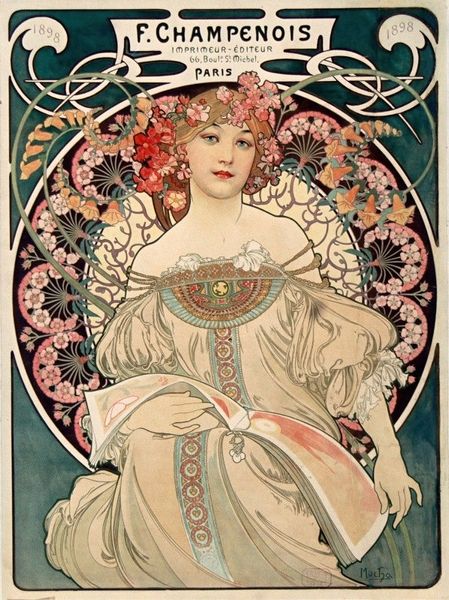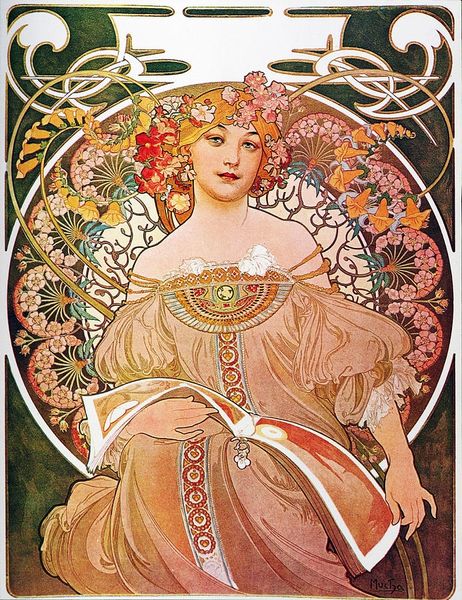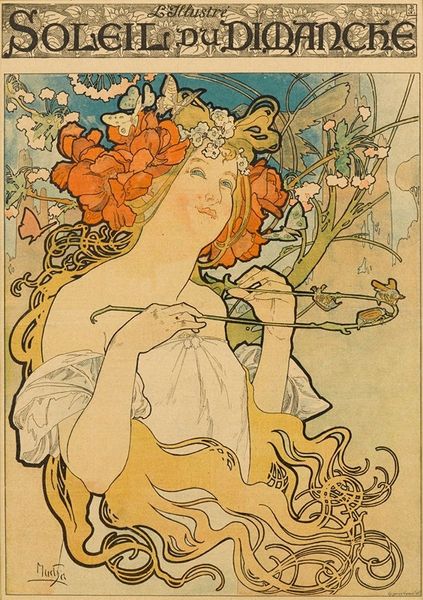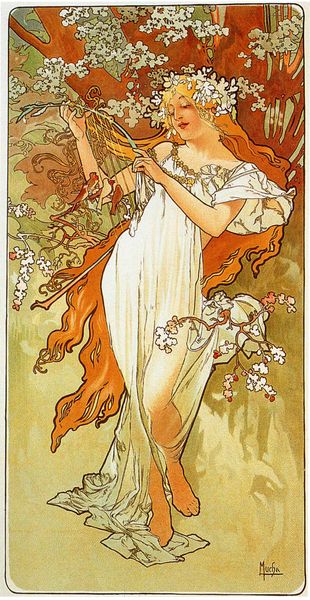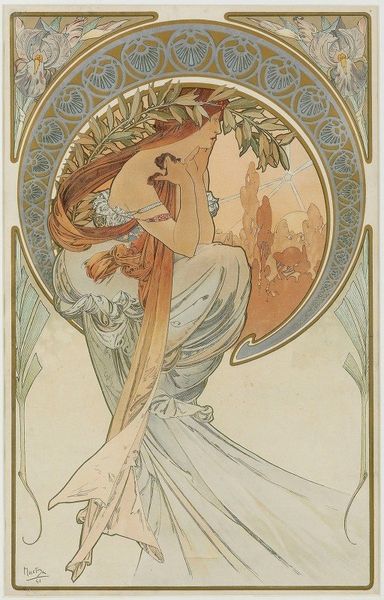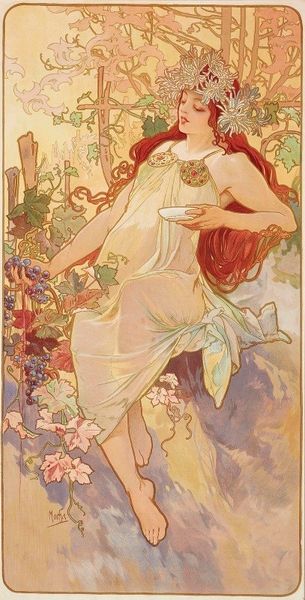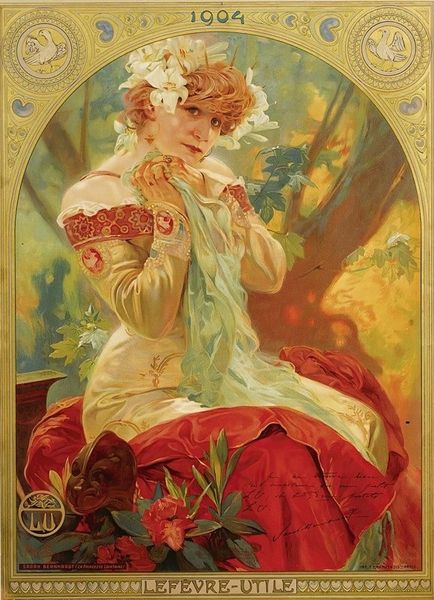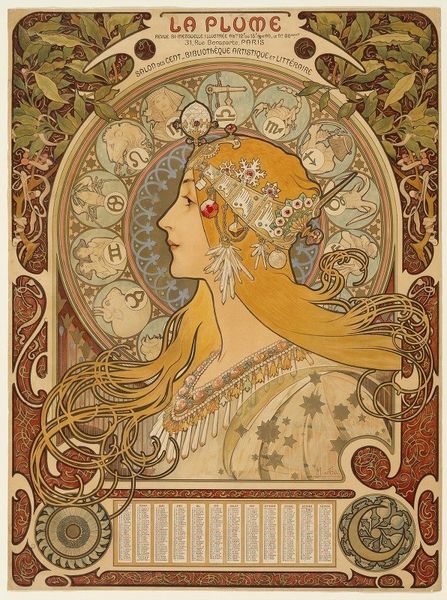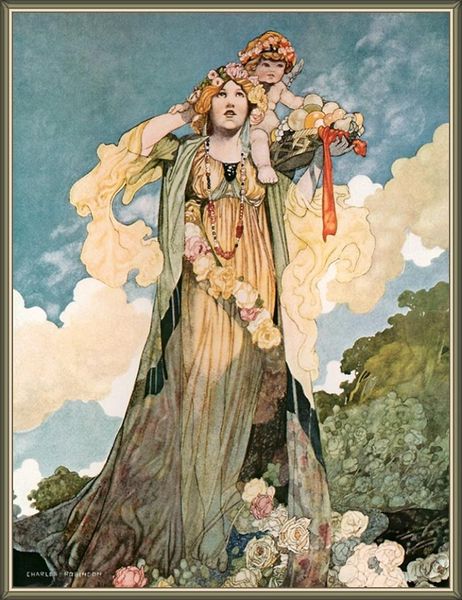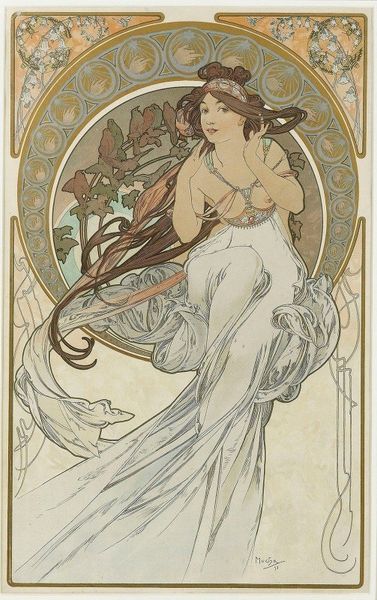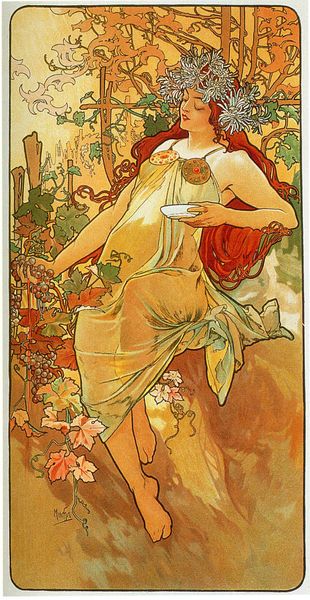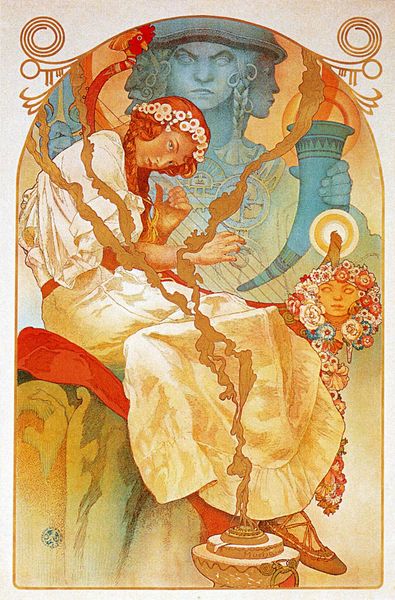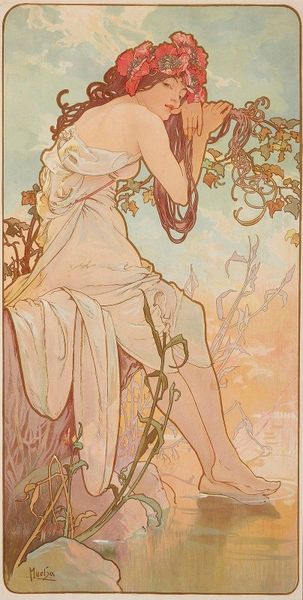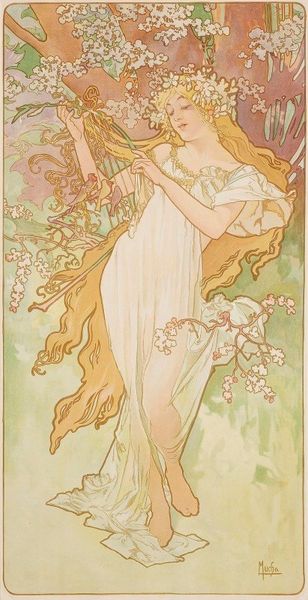
tempera, painting, poster
#
portrait
#
art-nouveau
#
tempera
#
painting
#
figuration
#
naive art
#
art nouveau
#
poster
Copyright: Public domain
Curator: Here we have Alphonse Mucha’s "Princess Hyacinth," created in 1911. It’s an example of his distinct Art Nouveau style. Editor: I’m immediately drawn to the colors—the muted golds and blues. It's calming but with that vivid crown, there’s also this arresting visual power. It feels like a dream. Curator: The piece showcases Mucha's commercial skill, specifically in designing posters. Look closely—it uses tempera. Editor: Yes, the medium gives it that lovely, slightly chalky texture. You can almost feel the grain of the paper. It's fascinating how the poster craft elevates everyday materials to create an idealized, almost ethereal image of royalty. This interplay, what does the image represent from a sociopolitical perspective? Curator: Mucha’s posters like these catered to a growing urban audience. It offers an idealized version of Czech identity and femininity within the growing nationalism movement and commercialism of the early 20th century. The art nouveau poster made art accessible for all, not just elite patrons. Editor: Precisely, these works are often labeled as 'decorative,' which undermines the craftsmanship. The materials themselves, the paper and pigment, how they were sourced, and processed—it reflects the wider context of industrial and material production and accessibility at the time. Curator: The figure is undeniably idealized, but also tied to specific political aspirations. You'll often see the female form personifying abstract virtues in fin-de-siecle art, a means of promoting cultural and national identity through beauty and allegorical form. Editor: And there is a bit of tension there as well! Look how this mass produced form, becomes itself an aspirational piece that also feels very intimately crafted and carefully put together. What could easily have become purely commercial still exudes care and pride in craftsmanship. Curator: Looking at the historical and cultural function, this print served the aspirations and concerns of a particular time, place, and public. Editor: I am fascinated how materials typically found within mass production settings when applied in unique ways achieve levels of personalization which provide us an access to a specific time in cultural and social history.
Comments
No comments
Be the first to comment and join the conversation on the ultimate creative platform.
